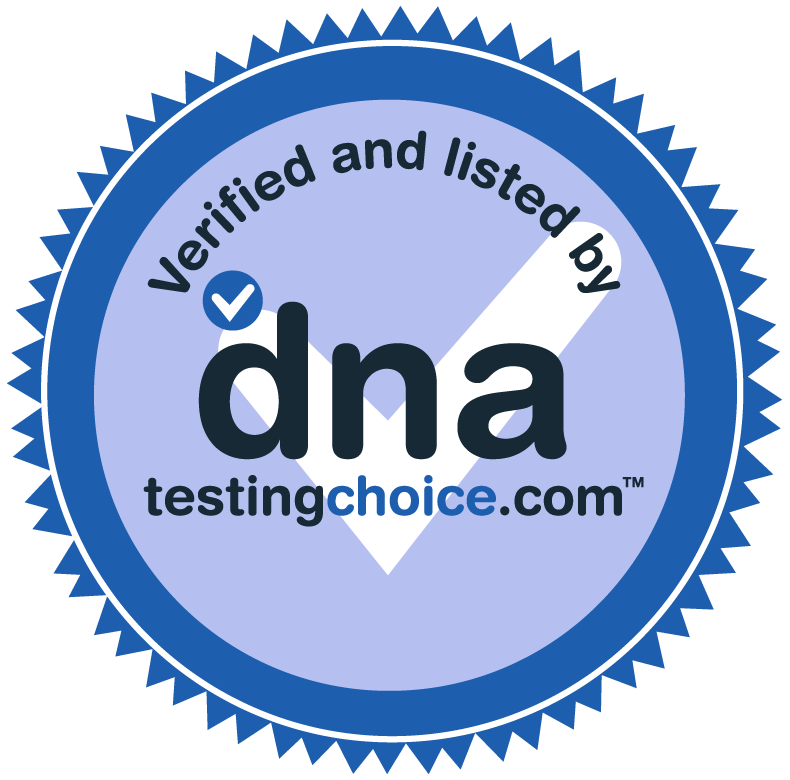Dog Inherited Disease & Trait Test
Price: Start from £55
Testing: 1 Dog Sample
Timeframe: 10 working days after your samples arrive at the laboratory for testing.

Due to the variety of breeds and diseases the laboratory is able to test for, kindly contact us with details of the breed and type of test you are looking for so we can advise and quote accordingly.
NOTE: The cost covers testing for 1 dog. Additional diseases tested are for testing the same dog using the same sample.
Do you wish your dog to live a longer and healthier life? Do you want to know what diseases your dog might be genetically predisposed to in order to take the necessary measures to mitigate the risks or eliminate them altogether? Our dog inherited disease test will assess your dog’s genetic disease susceptibility and establish how likely it is that he or she will develop the disease over the course of their lifetime. A dog inherited disease test means healthier and happier dogs. Our canine disease testing service starts from just £55 for the first test and £20 for each additional test ordered for the same canine at the same time. Results are ready in 10 working days from receipt of samples at the laboratory.
Why Do You Need This Test?
One reason is to simply take better control of your dog’s health in order to be able to have your best friend with you for longer. However, this test is crucial for dog breeders because it is the most accurate and scientific means available for selective mating – with canine disease testing, the gene pool can be cleared of any hereditary illnesses and all offspring born will be free of these diseases – when buyers come to choose their new dog, the breeder can assure them that the dog does not have a genetic predisposition towards the disease in question. Would you want to sell or buy a dog that is suffering from a genetic disease or carries a disease-causing gene that might affect its health later in life?
Understanding Your Results
Our results can help mitigate the risk of certain diseases – but truly understanding how to do this and coming up with the best wellness plan for your dog will need the guidance of veterinary surgeon.
The following table shows:
-
- The full list of diseases that we test for
- The dog breeds which may suffer from the disease
- The symptoms and prognosis of the disease
| Type of Disease | Dog Breeds in Which We Are Most Likely to See This Disease | Symptoms and Prognosis |
| Uric Acid DNA Test (Hyperuricosuria) | Bull Dogs, Black Russian Terrier, Dalmatians | Characterised by the formation of bladder stones; the stones causes pain and inflammation in the urinary tract. Blood in urine and frequent urination are often also symptoms. Condition can be life threatening. |
| Degenerative Myelopathy (DM) in Canine Breeds. Also known as chronic degenerative radiculomyelopathy | German Shepherds, Pembroke Welsh Corgi and Boxers | The disease results in muscle weakness and lack of coordination. Dogs often begin staggering or wobbling as they walk. Incontinence and paralysis may also result and dog will lose its ability to walk. |
| Centronuclear Myopathy | Labrador Retrievers (disease was previously known as Labrador muscular myopathy) | Muscle weakness, aversion to exercise and activity; difficulty eating, fatigue. The condition is rarely fatal. |
| Cystinuria | Newfoundlands, Dachshunds, Basset Hounds, English Bulldogs, Chihuahuas. Genetic testing only available for Newfoundlands | Urinary tract blockage, frequent urination, blood in urine and several infections. |
| Exercise Induced Collapse (EIC) | Dogs clinically affected by Exercise Induced Collapse (EIC) will often begin to exhibit leg weakness followed by a complete collapse after just 5 to 15 minutes of strenuous activity. | |
| Hereditary Nasal Parakeratosis (HNPK) | Labrador Retrievers | HNPK affected dogs will develop dry, rough crusts on the tip of the nose. In extreme cases, the dog’s nose will crack causing severe discomfort. |
| Multidrug Resistance 1 (MDR1) | MDR1 affected dogs are at risk of developing neurologic symptoms from several common drugs. | |
| Progressive Retinal Atrophy, Progressive Rod-Cone Degeneration (PRA-prcd) | PRA-prcd is inherited as an autosomal recessive disease. Degeneration of both rod and cone photoreceptor cells of the retina of PRA-prcd affected dogs usually occurs 3 to 5 years of age or later. |
Our results will indicate your dog’s susceptibility in terms of the following:
Clear – if the dog is clear, then it has no copy of the disease-causing gene. A dog that is clear of disease will also have puppies that are clear (so as long as both parents are clear). If one parent carries the gene, the offspring will have a 50% chance of inheriting it and a 50% chance of the dog being clear.
Carrier – the dog has inherited one copy of the disease -causing gene. This means it is a carrier and can pass on that gene to its offspring.
Affected – the dog has 2 copies of the disease causing gene and will be medically affected by it. If this dog mates with an affected dog, all offspring will inherit the gene. If just one parent is affected, offspring have a 50-50 chance of inheriting the gene.
The Science Behind The Test
This test analyses SNPs (single nucleotide polymorphisms) in your dog’s DNA. These SNPs are tellers of disease. A nucleotide is a section of DNA molecule made up of a particular genetic sequence. This sequence is usually the same from one dog to the next but sometimes there are variations, known as polymorphisms. These variations can be tiny, perhaps a slight change on a single unit but even that slight change can result in the gene coding wrongly for the protein it produces. These polymorphisms can cause certain diseases.
Your dog will have inherited the disease causing genes from its parent/s. If the dog in question has inherited a copy of the gene from both its parents, the animal may present the symptoms and develop the condition.
Sample collection for your canine test
Samples are collected using the oral swabs provided inside our kit. The procedure is totally painless on the dogs and can be carried out even on puppies. All you need to do is rub the swabs on the inside of your dog’s mouth for around ten seconds and then allow them to dry for an hour. You do not need a vet to assist you. However, on some dogs, you may need to get someone to hold their head firmly in place for a few seconds whilst you rub the swab. As a precaution, we suggest not allowing the dog to eat any food for one hour before sample collection as this could contaminate the DNA.



